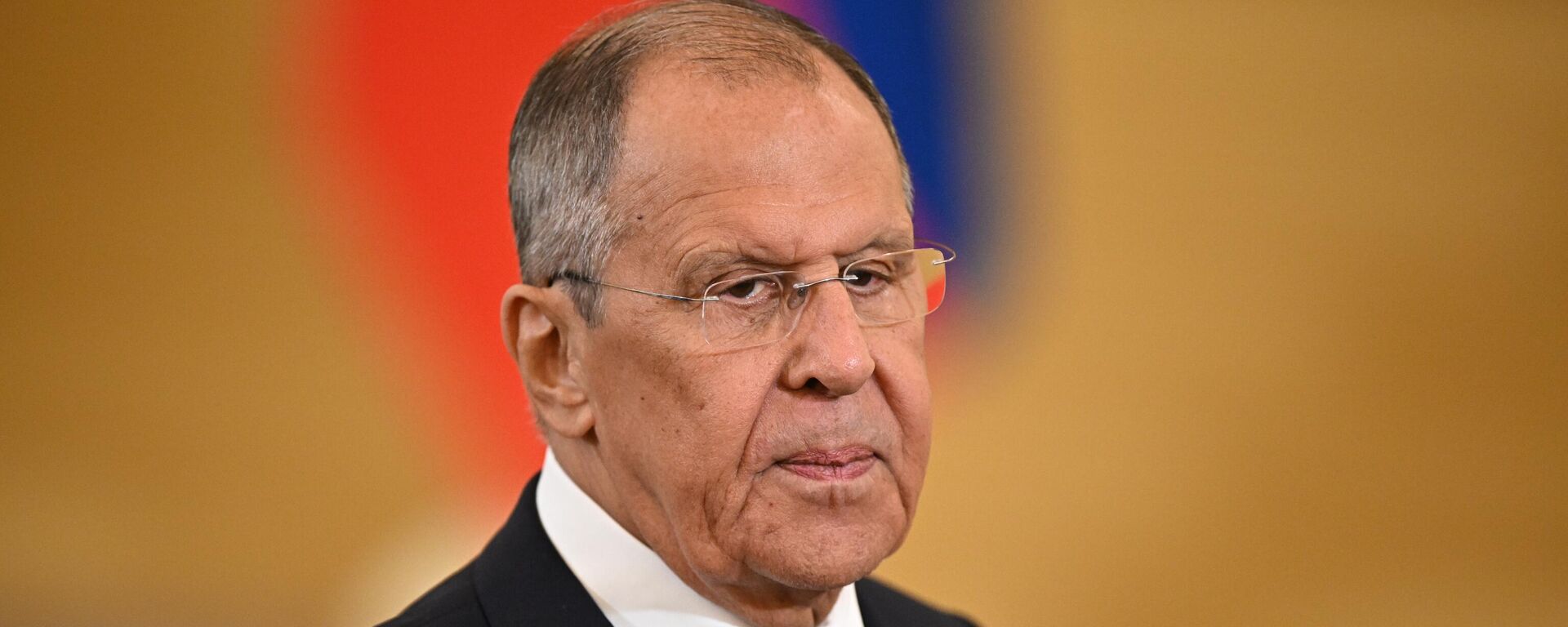https://sputniknews.in/20240913/us-backing-for-myanmar-rebels-fuelling-manipur-unrest-ex-intel-officer-8143992.html
US Backing for Myanmar Rebels Fuelling Manipur Unrest: Ex-Intel Officer
US Backing for Myanmar Rebels Fuelling Manipur Unrest: Ex-Intel Officer
Sputnik India
There is a growing sentiment in India that the covert US backing for Myanmar ethnic armed organisations (EAO), specifically the Christian groups, is a crucial factor fuelling insurgent attacks by various Kuki militants against civilians and security forces in Manipur.
2024-09-13T19:47+0530
2024-09-13T19:47+0530
2024-09-13T19:47+0530
sputnik opinion
sheikh hasina
george soros
india
manipur
myanmar
siliguri corridor
bangladesh
asean
south asia
https://cdn1.img.sputniknews.in/img/07e7/0c/1e/6031317_0:134:3165:1914_1920x0_80_0_0_ab9b3bd223e3a1ef3ddf806d7b704d35.jpg
There is a growing sentiment in India that the covert US backing for Myanmar ethnic armed organisations (EAO), specifically the Christian groups, is a crucial factor fuelling insurgent attacks by various Kuki militants against civilians and security forces in Manipur, a northeastern state where ethnic violence between majority Meitei and minority Kuki-Zo tribes have left over 200 dead and displaced over 60,000 people since last May.However, since 1 September, a series of armed drone and long-range attacks at two locations- Koutruk and Senjam Chirang- have turned a new chapter in the conflict. A high-level committee comprising police, Indian Army and Assam Rifles officials has been formed to probe the drone attacks.Colonel (retired) RSN Singh, a former operative with India's spy agency Research and Analysis Wing (R&AW) told Sputnik India that the use of armed drones and long-range rockets in Manipur was an "unprecedented development".The former spy pointed out that both armed drones and rockets have been effectively deployed by Burmese ethnic groups who have fighting the Myanmar regime forces since former Counsellor Aung San Suu Kyi was deposed in 2021.'All Signs Point to US Deep State Involvement'Bangladesh's former Prime Minister Sheikh Hasina claimed this year that there was an ongoing plot to create a "Christian" state comprising parts of Bangladesh and Myanmar. While Hasina didn't name India, observers believe that backers of the plan were also looking at the possibility of including parts of Indian states of Manipur and Mizoram in the proposed Christian enclave.Meanwhile, the US President Joe Biden has also signed the BURMA Act into law, which calls for providing "non-lethal assistance" to Myanmar's opposition groups."If Sheikh Hasina is talking about carving out a Christian enclave from parts of Bangladesh, Myanmar and also probably parts of Manipur and Mizoram, such a project doesn't suit Chinese interests. In fact, such a project is directed against China, with Indian north-east and adjoining regions just happening to be a battleground of sorts. Of course, such a Christian enclave would also destabilise our northeast," Singh reckoned.“The American Baptist missionaries have for long been involved in proselytizing in the tribal inhabited areas, particularly among Chins and Kachin people. In fact, the Baptist Church has been used as one of the vectors of the American Deep State in Myanmar," the former R&AW officer explained, adding that Christianity was the second biggest religion in Myanmar, with several reports documenting the role of missionaries for decades.Focussing on Soros' role, Singh highlighted the close ties enjoyed between George and his son Alexander and the former Counsellor Aung San Suu Kyi.Further, the former Indian intelligence official said that the American state and non-state actors' backing for opposition forces directly fed into the cycle of violence in Manipur.The ex-Indian agent stated that another factor fuelling the insurgency was the "drug trade" along parts of Myanmar-India border, particularly in the Chin-inhabited areas of Myanmar. "The revenues from drug trade have for long been suspected of fuelling ethnic tensions in north-eastern India," he said.
https://sputniknews.in/20240727/west-destabilising-situation-in-myanmar-lavrov-7923976.html
india
manipur
myanmar
siliguri corridor
bangladesh
asean
south asia
Sputnik India
feedback.hindi@sputniknews.com
+74956456601
MIA „Rossiya Segodnya“
2024
Dhairya Maheshwari
https://cdn1.img.sputniknews.in/img/07e6/0c/13/138962_0:0:641:640_100x100_80_0_0_2cb44360dbcdf6d84bf4b299cd045917.jpg
Dhairya Maheshwari
https://cdn1.img.sputniknews.in/img/07e6/0c/13/138962_0:0:641:640_100x100_80_0_0_2cb44360dbcdf6d84bf4b299cd045917.jpg
News
en_IN
Sputnik India
feedback.hindi@sputniknews.com
+74956456601
MIA „Rossiya Segodnya“
Sputnik India
feedback.hindi@sputniknews.com
+74956456601
MIA „Rossiya Segodnya“
Dhairya Maheshwari
https://cdn1.img.sputniknews.in/img/07e6/0c/13/138962_0:0:641:640_100x100_80_0_0_2cb44360dbcdf6d84bf4b299cd045917.jpg
myanmar india, myanmar news, myanmar india border, manipur news, manipur bangladesh, manipur riots, manipur violence, meitei kuki clashes, kuki zo tribes, manipur cm, bangladesh news christian state, burma act, obama pivot to asia strategy, southeast asia news, soros, us baptist missionaries, american baptist church
myanmar india, myanmar news, myanmar india border, manipur news, manipur bangladesh, manipur riots, manipur violence, meitei kuki clashes, kuki zo tribes, manipur cm, bangladesh news christian state, burma act, obama pivot to asia strategy, southeast asia news, soros, us baptist missionaries, american baptist church
US Backing for Myanmar Rebels Fuelling Manipur Unrest: Ex-Intel Officer
Manipur Police's Inspector General of Police (Operations) IK Muivah said this week that forensic experts suspected a foreign role in high-tech drone attacks used by Kuki militants. Further, he said that foreign involvement was also being probed into the use of long-range rockets.
There is a growing sentiment in India that the covert US backing for Myanmar ethnic armed organisations (EAO), specifically the Christian groups, is a crucial factor fuelling insurgent attacks by various Kuki militants against civilians and security forces in Manipur, a northeastern state where ethnic violence between majority Meitei and minority Kuki-Zo tribes have left over 200 dead and displaced over 60,000 people since last May.
However, since 1 September, a series of armed drone and long-range attacks at two locations- Koutruk and Senjam Chirang- have turned a new chapter in the conflict. A high-level committee comprising police, Indian Army and Assam Rifles officials has been formed to probe the drone attacks.
Colonel (retired) RSN Singh, a former operative with India's spy agency Research and Analysis Wing (R&AW) told Sputnik India that the use of armed drones and long-range rockets in Manipur was an "unprecedented development".
"We are seeing the use of drones in combat for the first time in the state. And, so is the case with rockets with a range of five kilometres, which is also a new development of sorts," Singh said.
The former spy pointed out that both armed drones and rockets have been effectively deployed by Burmese ethnic groups who have fighting the Myanmar regime forces since former Counsellor Aung San Suu Kyi was deposed in 2021.
"But, these kinds of weapons and aerial systems have been in use in Myanmar since at least 2021. I would say that it was only a matter of time before systems found their way to the hands of militant groups in Manipur," Singh said, noting that nearly 120 trucks carrying goods from China to Myanmar were targeted in a drone attack suspected to have been carried out by opposition forces last November.
'All Signs Point to US Deep State Involvement'
Bangladesh's former Prime Minister Sheikh Hasina claimed this year that there was an ongoing plot to create a "Christian" state comprising parts of Bangladesh and Myanmar. While Hasina didn't name India, observers believe that backers of the plan were also looking at the possibility of
including parts of Indian states of Manipur and Mizoram in the proposed Christian enclave.
Meanwhile, the US President Joe Biden has also signed the BURMA Act into law, which calls for providing "non-lethal assistance" to Myanmar's opposition groups.
Singh said that Washington's primary goal was to disrupt China's growing presence in Myanmar, a Belt and Road Initiative (BRI) partner, and deny it access to the Bay of Bengal. He noted that Chinese plans to operationalise the Kyaukpyu deep-water port in the western Rakhine state had hit a roadblock due to the Rohingya crisis
"This is one of the reasons why the Americans and western allies want to keep the Rohingya refugee problem alive and reject proposals to repatriate the Rohingya refugees in their native Rakhine state," the former Indian agency said.
"If Sheikh Hasina is talking about carving out a Christian enclave from parts of Bangladesh, Myanmar and also probably parts of Manipur and Mizoram, such a project doesn't suit Chinese interests. In fact, such a project is directed against China, with Indian north-east and adjoining regions just happening to be a battleground of sorts. Of course, such a Christian enclave would also
destabilise our northeast," Singh reckoned.
Further, he argued that the US 'Deep State' actors, including the Baptist Church and the George Soros-backed Open Society Foundation (OSF), were key players in the ongoing cycle violence in Myanmar's northern areas adjoining the state of Manipur.
“The American Baptist missionaries have for long been involved in proselytizing in the tribal inhabited areas, particularly among Chins and Kachin people. In fact, the Baptist Church has been used as one of the vectors of the American Deep State in Myanmar," the former R&AW officer explained, adding that Christianity was the second biggest religion in Myanmar, with several reports documenting the role of missionaries for decades.
Focussing on Soros' role, Singh highlighted the close ties enjoyed between George and his son Alexander and the former Counsellor Aung San Suu Kyi.
Singh said that Soros had been quite active in Myanmar and met former leader Aung San Suu Kyi on multiple occasions in the last decade or so, including during a visit to Myanmar in 2011. He added that OSF had been quite successful in lobbying the western governments to impose a "full arms embargo" on the Myanmar armed forces and increasing sanctions on the military leaders.
Further, the former Indian intelligence official said that the American state and non-state actors' backing for opposition forces directly fed into the cycle of violence in Manipur.
"In terms of its demography, the Buddhists are concentrated mainly in inner Myanmar. In the outer Myanmar along the border areas with China and India, many influential tribes inhabiting these regions are Christians, including Kachins and Chins. A sizable section of the population residing in the Naga hill areas are known to be Christians. Along the border with India, tribes such as Chin, Kuki and Zo have always considered the Myanmar-India border as notional. A sort of free movement regime has existed among these groups. Given the close cultural affinity, the pact of Church is common on both sides of the border," Singh stated.
In February, Home Minister Amit Shah announced India's plan to fence the entire stretch of the 1,643 kilometre-long India-Myanmar border.
The ex-Indian agent stated that another factor fuelling the insurgency was the "drug trade" along parts of Myanmar-India border, particularly in the Chin-inhabited areas of Myanmar. "The revenues from drug trade have for long been suspected of fuelling ethnic tensions in north-eastern India," he said.



